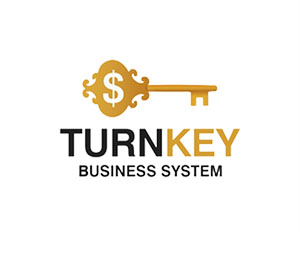
Top 10 Forex Trading Strategies Dominating 2025
The forex market in 2025 operates at unprecedented velocity, driven by artificial intelligence integration, volatile geopolitical dynamics, and technological breakthroughs that fundamentally transformed currency trading.
Retail and institutional traders navigating daily turnover exceeding $7.5 trillion now deploy sophisticated strategies combining algorithmic precision with traditional technical analysis.
As central banks from the Federal Reserve (USA) to the European Central Bank (EU) maintain aggressive policy stances amid persistent inflation concerns through October 2025, successful traders leverage these ten dominant forex trading strategies to capture opportunities across major pairs like EUR/USD, GBP/USD, and emerging market currencies experiencing heightened volatility.
Retail and institutional traders navigating daily turnover exceeding $7.5 trillion now deploy sophisticated strategies combining algorithmic precision with traditional technical analysis.
As central banks from the Federal Reserve (USA) to the European Central Bank (EU) maintain aggressive policy stances amid persistent inflation concerns through October 2025, successful traders leverage these ten dominant forex trading strategies to capture opportunities across major pairs like EUR/USD, GBP/USD, and emerging market currencies experiencing heightened volatility.
Algorithmic Trading Systems: The New Market Standard
Algorithmic forex trading evolved from niche institutional tool to mainstream necessity throughout 2024 and into 2025. Traders now execute approximately 70% of forex transactions through automated systems programmed with predefined criteria analyzing price movements, technical indicators, and real-time market data.According to Bank for International Settlements data from September 2025, algorithmic strategies reduced average execution time from 500 milliseconds to under 50 milliseconds while eliminating emotional biases that historically caused retail traders to exit winning positions prematurely or hold losing trades excessively.
The democratization of algorithmic tools through platforms like MetaTrader 5, cTrader, and specialized API services allows individual traders to compete with institutional desks. These systems continuously monitor dozens of currency pairs simultaneously, identifying arbitrage opportunities lasting mere seconds and executing complex multi-leg strategies impossible for manual traders. The risk management component proves equally valuable, with algorithms automatically adjusting position sizes based on volatility measurements and implementing stop-losses with microsecond precision that prevents slippage during high-impact news events.
However, algorithmic trading demands rigorous backtesting and ongoing optimization. Market conditions that generated profits in 2024 may prove disastrous in 2025 as central bank policies shift. Traders achieving consistent success typically maintain multiple algorithm variations, deploying specific versions based on detected market regimes—trending versus ranging conditions, high versus low volatility periods, and risk-on versus risk-off sentiment dominating global flows.

Top 10 Forex Trading Strategies Dominating 2025
Machine Learning: Pattern Recognition at Superhuman Scale
Machine learning applications revolutionized forex analysis by processing historical data volumes exceeding human cognitive capacity. Advanced neural networks trained on decades of price action, economic indicators, and geopolitical events now identify subtle correlations that traditional technical analysis misses entirely.Traders employing machine learning models throughout 2025 report accuracy improvements between 8% and 15% compared to conventional indicator-based systems, according to proprietary research from quantitative trading firms surveyed in August 2025.
The technology excels at non-linear pattern recognition, detecting complex relationships between seemingly unrelated variables.
For example, machine learning systems correlate commodity price movements, bond yield spreads, equity volatility indices, and forex pairs to generate predictive signals before traditional indicators confirm trends. This anticipatory capability provides crucial edge in markets where milliseconds determine profitability.
Several forex brokers now integrate machine learning directly into trading platforms, offering retail clients institutional-grade predictive analytics previously accessible only to hedge funds managing billions.
Implementation requires substantial technical expertise or subscription to specialized services offering pre-trained models. Traders must continuously retrain algorithms as market dynamics evolve, feeding fresh data to maintain predictive accuracy. The October 2025 surge in USD/JPY volatility following Bank of Japan policy adjustments caught numerous machine learning systems unprepared, highlighting that even sophisticated AI requires human oversight and adaptive model management.
High-Frequency Trading: Exploiting Microsecond Opportunities
High-frequency forex trading strategies capitalize on price discrepancies measured in fractions of a pip, executing thousands of trades daily with individual profit targets between 0.5 and 2 pips. The approach demands cutting-edge technology infrastructure, including co-located servers positioned within exchange data centers to minimize latency below 10 milliseconds.Major forex brokers in London, New York, and Singapore invested over $800 million in infrastructure upgrades during 2024 to accommodate high-frequency traders, according to industry consultancy Greenwich Associates reporting from March 2025.
The strategy proves particularly effective in major liquid pairs where bid-ask spreads remain tight and sufficient order flow exists to enter and exit positions without moving markets. EUR/USD, the world's most traded currency pair with daily volumes exceeding $1.4 trillion as of September 2025, provides ideal conditions for high-frequency operations. Traders combine algorithmic execution with direct market access, bypassing traditional broker routing to interact directly with liquidity providers and electronic communication networks.
Risk management becomes exponentially complex at high-frequency speeds. A malfunctioning algorithm can generate catastrophic losses within seconds, as demonstrated by several publicized incidents throughout 2024 where coding errors caused automated systems to execute irrational trades.
Successful high-frequency traders implement multiple redundant safety mechanisms, including real-time position monitoring, automatic shutdown triggers if losses exceed predetermined thresholds, and regular algorithm audits conducted by independent risk management specialists.
News-Based Trading: Monetizing Information Asymmetry
Geopolitical volatility and economic uncertainty throughout 2025 elevated news-based forex trading to essential strategy status. Traders monitoring Federal Reserve communications, European Central Bank policy statements, geopolitical developments in the Middle East affecting oil prices, and Chinese economic data releases position themselves to profit from sudden currency movements triggered by unexpected information.The Russian-Ukrainian conflict continuing into 2025 created recurring opportunities in EUR/USD and emerging European currencies as diplomatic developments shifted risk sentiment hourly.
Artificial intelligence transformed news trading through natural language processing systems analyzing thousands of news sources simultaneously, categorizing information by market impact probability and generating automated trading signals within milliseconds of headline publication.
The critical challenge involves distinguishing genuine market-moving news from noise. Social media proliferation created information overload where false rumors temporarily distort prices before corrections occur. Experienced traders combine AI sentiment analysis with fundamental economic understanding, filtering signals through broader context about monetary policy trajectories, fiscal conditions, and structural economic trends.
Trend Following: Time-Tested Reliability in Modern Markets
Despite technological innovations, trend following remains among the most consistently profitable forex trading strategies in 2025.The approach capitalizes on fundamental principle that currency movements driven by macroeconomic forces persist longer than most traders anticipate. When the Federal Reserve maintains restrictive monetary policy while other central banks ease, USD strength trends continue for months rather than days.
Traders identify these directional biases using moving averages, MACD indicators, and average directional index tools, entering positions when momentum confirms trend establishment.
The EUR/USD downtrend from January through June 2025 exemplified trend following opportunities, with the pair declining from 1.0850 to 1.0350 as interest rate differentials favored dollar strength.
Traders employing 50-day and 200-day moving average crossover systems captured substantial portions of this 500-pip move while avoiding premature entries during temporary corrections.
Trend following's statistical edge derives from cutting losses quickly when price action contradicts the thesis while letting winning positions compound as trends extend beyond initial expectations.
Counter-Trend Trading: Profiting from Market Extremes
Counter-trend strategies target temporary exhaustion points where prices deviate excessively from equilibrium values before inevitable mean reversion.Traders employing relative strength index, stochastic oscillators, and Bollinger Bands identify overbought conditions above 70 RSI or oversold readings below 30, entering short-term positions anticipating corrective moves. The approach proves particularly effective during sustained trends where emotional extremes create profit-taking opportunities before primary trends resume.
Machine learning enhanced counter-trend precision throughout 2025 by analyzing historical instances of similar extreme readings, calculating probability distributions for subsequent price behavior.
Traditional RSI overbought signals generated false reversals approximately 60% of the time during strong trends, but machine learning systems reduced false signals to 35% by incorporating additional context like volatility regimes, time-of-day liquidity patterns, and correlation with related assets.
The strategy demands strict discipline and rapid execution. Counter-trend trades by definition oppose prevailing momentum, requiring tight stop-losses to limit damage when anticipated reversals fail to materialize. Successful practitioners target modest profit objectives between 15 and 40 pips, exiting quickly rather than hoping small corrections evolve into trend reversals.
Carry Trade Strategy: Harvesting Interest Rate Differentials
Carry trading capitalizes on yield disparities between currency pairs, borrowing in low-interest-rate currencies to invest in higher-yielding alternatives. The strategy generated substantial returns throughout 2024 and into 2025 as interest rate divergence widened between developed markets.According to data from Citigroup's forex strategy team published in September 2025, carry trade strategies delivered average annual returns of 8.7% over the preceding twelve months, outperforming traditional buy-and-hold equity indexes.
The returns combined interest rate differential collection—earning daily swap credits for maintaining positions overnight—with capital appreciation when low-yielding currencies weakened against high-yielding counterparts.
Risk management proves critical as carry trades suffer devastating losses during risk-off episodes when investors flee high-yielding currencies simultaneously. The August 2024 market volatility spike caused carry trades to lose three months of accumulated gains within a single week as yen strengthened dramatically.
Successful carry traders diversify across multiple currency pairs, avoid excessive leverage despite tempting yield advantages, and maintain vigilant monitoring of macroeconomic developments that might trigger sudden risk sentiment shifts. Central bank policy meetings from the Federal Reserve, Bank of Japan, and Reserve Bank of Australia represent critical risk events where carry positions face maximum vulnerability.
Scalping: Accumulating Small Wins Through Volume
Scalping emerged as increasingly popular strategy in 2025 due to technological improvements enabling rapid-fire execution and tighter spreads offered by competitive brokers. Scalpers execute dozens to hundreds of trades daily, targeting tiny price movements between 1 and 5 pips per trade.The approach leverages high win rates—often exceeding 70%—with individual profits smaller than average losses, requiring exceptional execution discipline and favorable cost structures to remain profitable after spread and commission expenses.
The strategy demands intense concentration and sophisticated technical setups identifying micro-trends lasting minutes rather than hours. Scalpers utilize one-minute and five-minute charts combined with volume indicators, order flow analysis, and level II market depth data revealing concentrations of buy and sell orders.
According to broker statistics from IC Markets published in June 2025, successful scalpers maintain average holding periods under eight minutes and never risk more than 0.5% of account capital per individual trade despite executing high trade frequencies.
Technology infrastructure determines scalping viability. Traders require ultra-fast internet connections, powerful computers executing charting software without latency, and broker relationships providing raw spread pricing without markup padding that erodes thin profit margins.
The most successful scalpers often locate in financial centers like London, New York, Singapore, or Sydney where proximity to liquidity providers minimizes execution delays. Scalping EUR/USD during London-New York session overlap when liquidity peaks provides optimal conditions with bid-ask spreads compressing to 0.1 pips and sufficient price volatility generating multiple opportunities hourly.
Breakout Trading: Capturing Explosive Movements
Breakout strategies identify consolidation patterns where price compresses between defined support and resistance levels before explosive directional moves. Traders monitor triangles, rectangles, and range-bound markets anticipating eventual breakouts, positioning themselves to ride resulting momentum.The approach combines technical pattern recognition with fundamental catalysts, recognizing that sustained consolidation often precedes major trends as market participants await clarity on economic developments or central bank policies.
Machine learning dramatically improved breakout identification in 2025 by distinguishing genuine breakouts from false signals that quickly reverse.
Traditional breakout trading suffered approximately 50% false breakout rates according to technical analysis research, but AI-enhanced systems reduced failures to 30% by analyzing volume patterns, volatility expansion signatures, and correlation with related currency pairs.
The EUR/USD consolidation between 1.0500 and 1.0650 throughout March 2025 exemplified classic breakout setup, with price compressing for three weeks before April's explosive decline below support triggering 200-pip downtrend.
Traders entering breakout positions implement immediate stop-losses just inside the broken level, risking 20-30 pips to capture potential 100-200 pip trends.
Volume confirmation proves essential—legitimate breakouts typically feature trading volume exceeding recent averages by 40% or more, indicating genuine market participant conviction rather than temporary volatility spikes lacking follow-through momentum.
Sentiment Analysis: Trading Market Psychology
Understanding collective market psychology through sentiment analysis became indispensable for forex success in 2025. Traders utilize AI-powered tools analyzing news feeds, social media conversations, broker positioning data, and options markets to gauge whether market participants lean bullish or bearish on specific currencies. Contrarian approaches profit when sentiment reaches extremes, positioning against overcrowded trades before inevitable corrections.The Commodity Futures Trading Commission publishes weekly Commitment of Traders reports revealing institutional and retail positioning in currency futures, providing sentiment insights. When commercial hedgers aggressively short a currency while speculators build record long positions, contrarian traders recognize vulnerability for squeeze moves punishing the majority.
Social media sentiment analysis using natural language processing examines millions of Twitter posts, Reddit discussions, and financial news comments, categorizing overall market mood.
Sophisticated traders combine multiple sentiment indicators with traditional technical and fundamental analysis, using sentiment as confirming factor rather than primary decision driver for trade entries and exits.
Written by Ethan Blake
Independent researcher, fintech consultant, and market analyst.
November 11, 2025
Join us. Our Telegram: @forexturnkey
All to the point, no ads. A channel that doesn't tire you out, but pumps you up.
Independent researcher, fintech consultant, and market analyst.
November 11, 2025
Join us. Our Telegram: @forexturnkey
All to the point, no ads. A channel that doesn't tire you out, but pumps you up.









Report
My comments